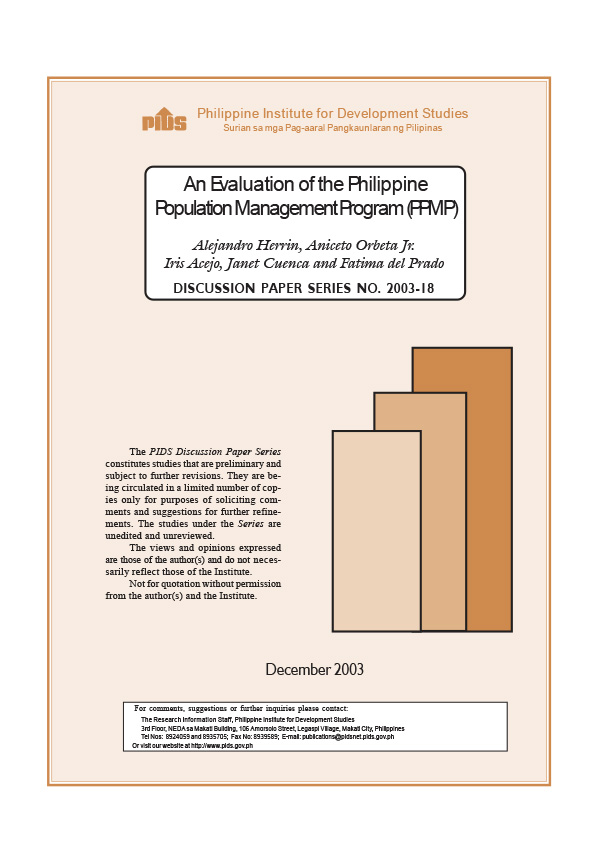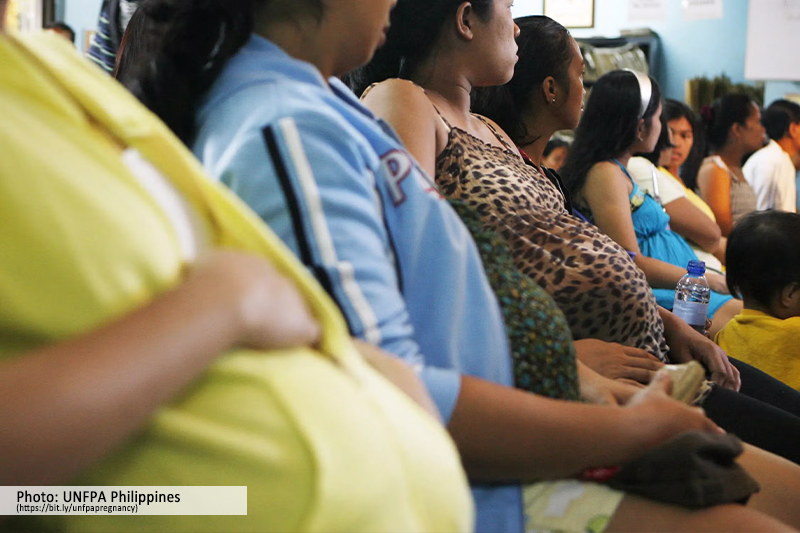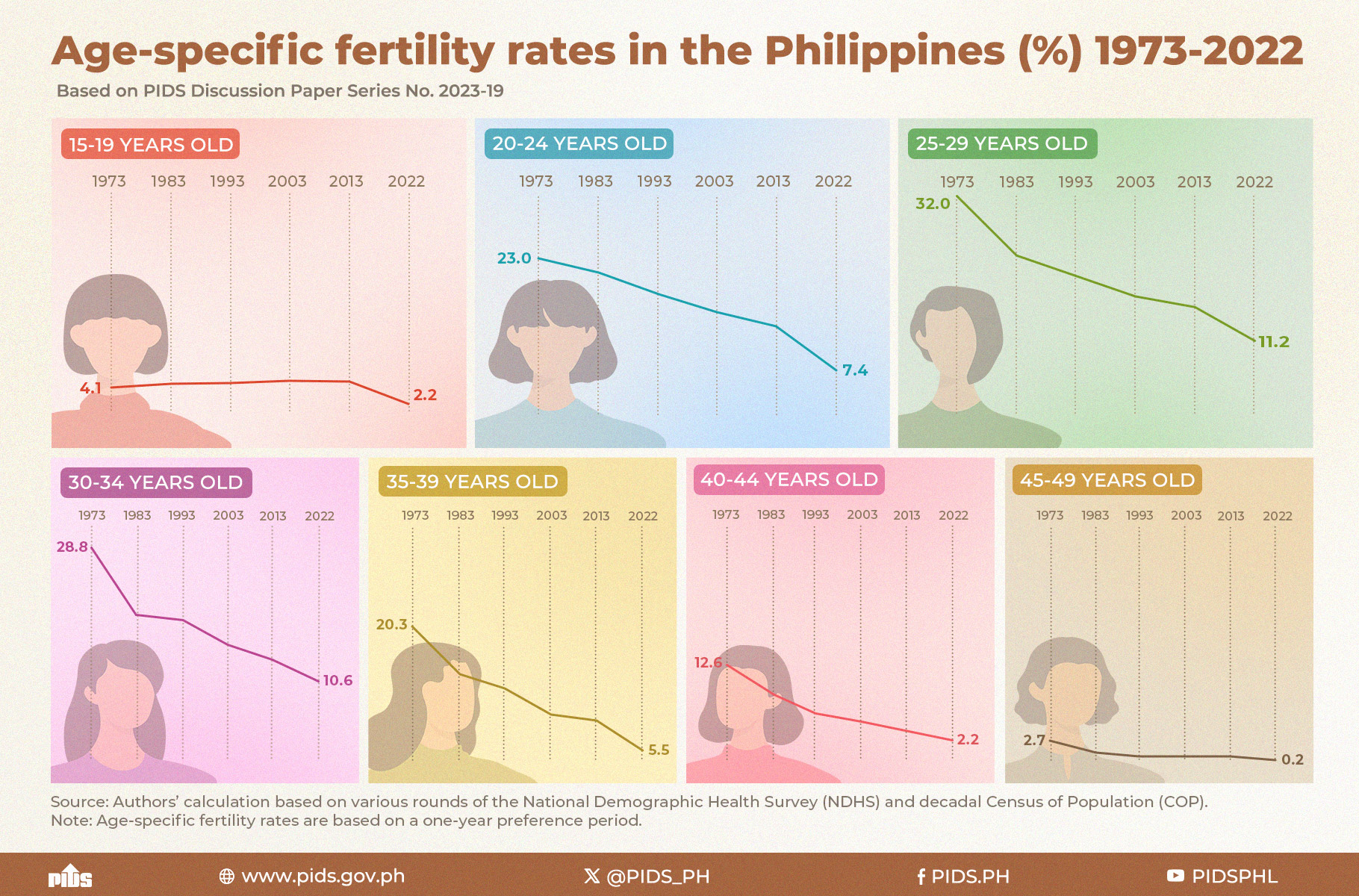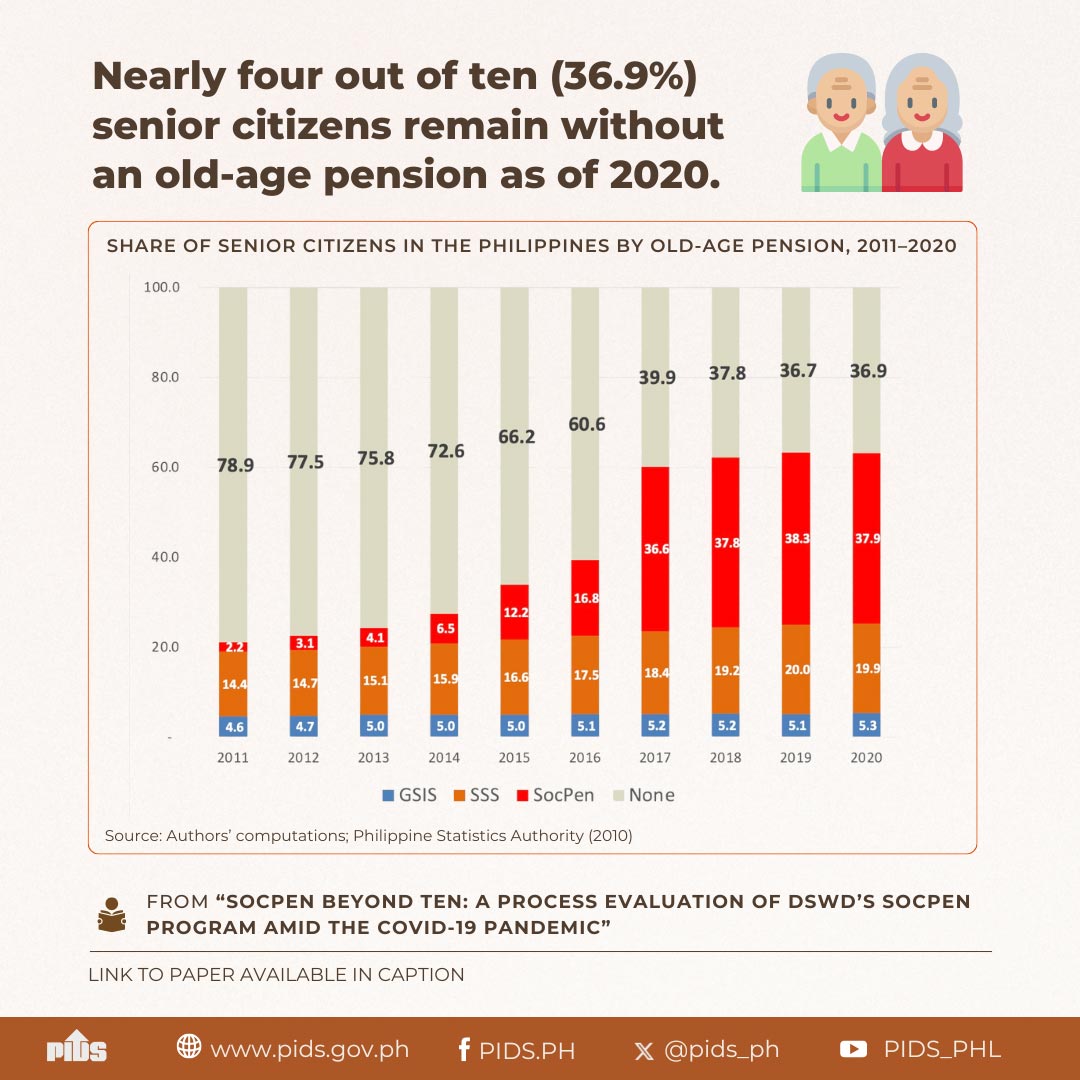Early child-bearing and high fertility still persist especially among the poor, despite the more than two decades of family planning program implementation in the Philippines. Using an evaluation framework that links inputs, outputs, utilization of outputs and outcomes, the paper analyzes the impact of the different components of the Philippine Population Management Program (PPMP), namely: family planning and responsible parenthood, reproductive health, adolescent health and youth development, and integration of population and development. On the inputs and output side, the paper utilizes the expenditures on the different components of the program for the years 1998 and 2000 presented in Racelis and Herrin (2003). Data from the several rounds of the national demographic survey, family planning survey and maternal and child health survey were used to generate utilization and outcomes indicators. The paper highlights the inadequate institutional and financial support as the primary cause of the population program’s ineffectual performance.
Citations
This publication has been cited 1 time
- Mello, Michelle Marie et. al. 2006. The role of law in public health: The case of family planning in the Philippines. Social Science & Medicine, 63, no. 2, 384-396. Elsevier.













